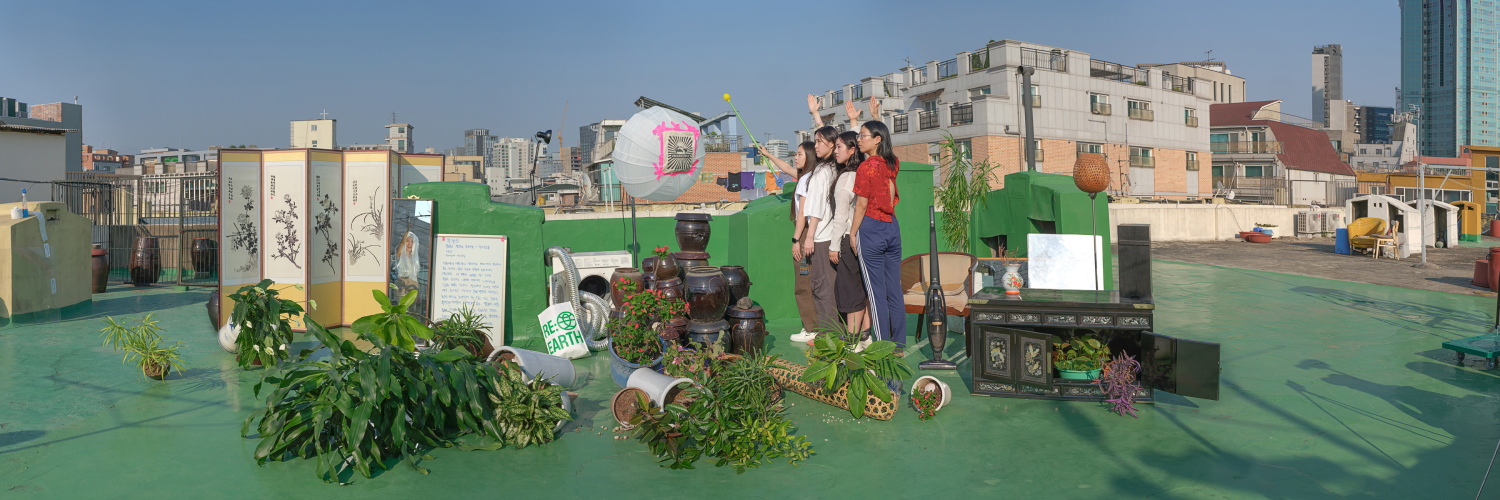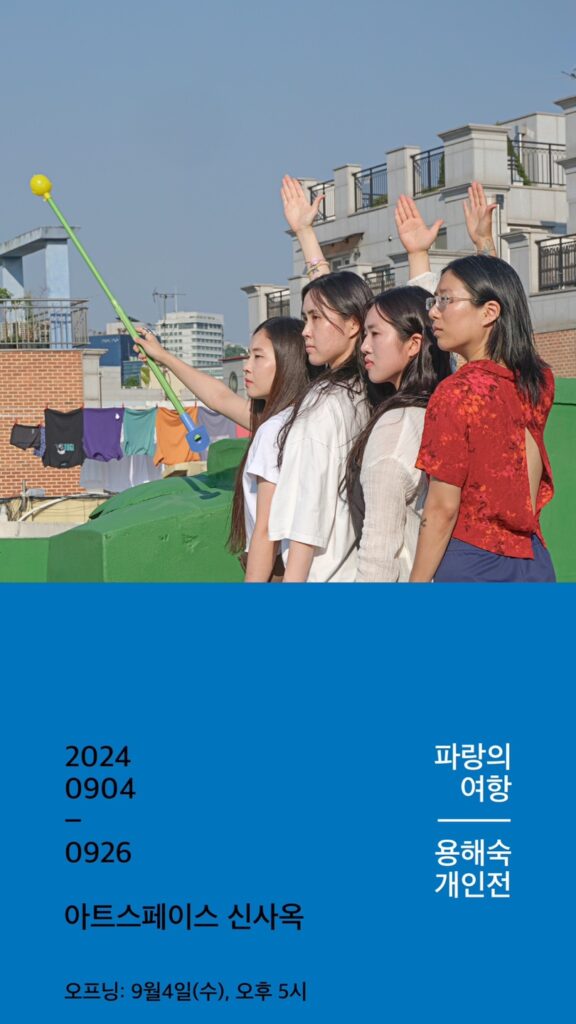

(평일) 12:00-18:00
(주말)12:00-18:00
화면에 모든 걸 담아야 한다. 화각이 나오지 않는다면 방향을 바꿔가며 담을 수 있는 만큼 최대한의 폭을 담는다. 하지만 프레임은 한정되어 있고 셔터는 동시적이지 않다. 누르고 또 누르는 동안, 시차마다 순간이 포착되고 분절된 단위가 매겨지는 동안 그것을 뺀 시간이 빠져나간다.
그는 포착한 장면을 하나로 잇는다. 한 장의 사진은 바로 전에 찍은 다른 사진과 이어지며 부분의 풍경이 되고, 부분과 부분이 이어져 하나의 풍경으로서 파노라마가 된다. 파노라마는 분절된 화면을 잇고 엮으며 하나의 화면으로 다듬어져 나온다. 총합의 화면을 보기 위해 관객은 제 시선을 멀리 두거나 커다란 화면을 따라 말 그대로 서성이고 걸어야 한다.
남웅 전시평론 <지금을 쪼개고 다시 잇는 동안>중에서 *Exhibition Introduction
A Panorama
Everything has to go into the frame. If the viewing angle does not match, the shooting direction is adapted, so that as much as possible fits into the frame. The size of the frame is limited, though, and photos are taken repeatedly. The shutter is pressed and pressed again, every time an instant is both captured and divided, creating time lags between shots. Meanwhile, the gap between – the moment it takes to take a photo – evades the full image.
The artist pieces the captured scenes together into one. One photo is joint to the next one, taken just before, and becomes part of a scenery. One by one, the parts get attached to the scenery, turning into a panorama. This panorama connects the divided frames, weaves the time-lagged moments together, and refines them all into a single frame. To see the full frame, the audience has to take a view from afar or literally stroll along the big image, step by step.
– Nam Woong (art critic), from “While Splitting the Now and Piecing it Together Again”
